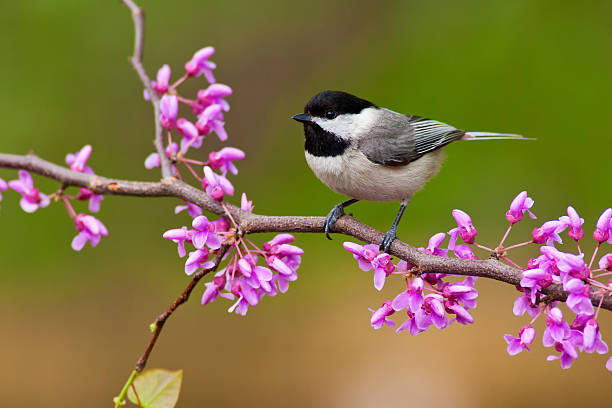The Black-Capped Chickadee (Poecile atricapillus) is a small passerine bird that is native to North America. It is a popular bird among birdwatchers due to its distinctive appearance, pleasant calls, and endearing behavior. In this article, we will explore the physical characteristics, habitat, behavior, and conservation status of the Black-Capped Chickadee.
Physical Characteristics
The Black-Capped Chickadee is a small bird, measuring between 11 and 14 cm in length and weighing between 8 and 15 grams. It has a distinctive black cap and throat, with a white face, gray back, and buff-colored sides. The wings and tail are grayish-blue, and the underparts are white. The beak is short and cone-shaped, and the legs and feet are black.
Habitat and Range
The Black-Capped Chickadee is a common bird throughout much of North America, ranging from Alaska and Canada to the eastern United States. These birds can be found in a variety of habitats, including deciduous and coniferous forests, parks, and suburban areas. They are non-migratory and remain in their breeding territories year-round.
Behavior and Diet
The Black-Capped Chickadee is a curious and active bird that is known for its acrobatic movements and distinctive calls. They are social birds and are often found in small flocks, especially during the winter months. These birds communicate with each other using a variety of calls, including a loud "chick-a-dee-dee-dee" call that gives them their name.
Black-Capped Chickadees are omnivores and have a varied diet that includes insects, seeds, berries, and fruit. They are also known for their habit of caching food, hiding it in crevices or under bark for later use.
Breeding
Black-Capped Chickadees breed in the spring and summer, with pairs typically forming in late winter. These birds build their nests in tree cavities or birdhouses, using moss, bark, and feathers to construct a cozy home for their eggs. Females lay 6-8 eggs per clutch, and both parents take turns incubating the eggs and caring for the young.
Conservation Status
The Black-Capped Chickadee is not currently considered a species of concern by the International Union for Conservation of Nature (IUCN). However, habitat loss and fragmentation can impact their populations, and efforts to conserve and protect forests and other natural habitats can help ensure their continued survival.
Conclusion
The Black-Capped Chickadee is a beloved bird that is known for its distinctive appearance, pleasant calls, and endearing behavior. These birds are found throughout much of North America and can be found in a variety of habitats. Their varied diet and habit of caching food make them an important part of the ecosystem. Efforts to protect their habitats and populations are important for ensuring that future generations can enjoy these delightful birds.


Comments
Post a Comment